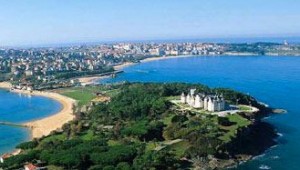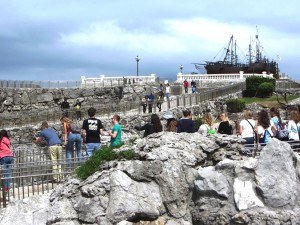
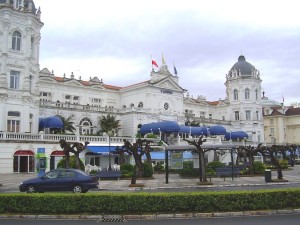
CANTABRIA IN THE GREEN SPAIN: landscapes, history, and tourism
Cantabria is one of the regions located in the north of the peninsular and which form part of what is known as Green Spain. Dominated by the Cantabrian mountain range and looking out over the sea, the region has a mild wet climate and abundant vegetation. The region takes its name from the Cantabrians, a Celtic people under Roman occupation during the latter part of the conquest of Hispania, in the late 1st century B.C. and the early part of the Christian era. Centuries later, the region would be witness to areas where the Reconquest began.
Santander
Santander, the main city and capital of Cantabria, is located on the coast and this has shaped its history and urban development. During the Middle Ages, it played an important role as a port in the kingdom of Castile, both in military terms and as regards trade. Today, it is a major destination for domestic tourists in search of the beach for their summer holidays.
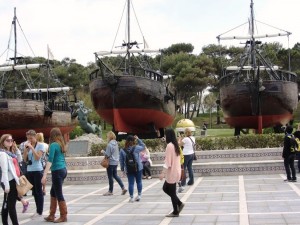
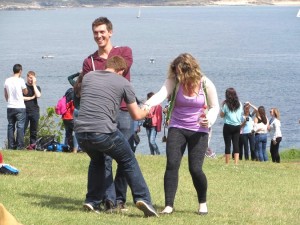
Santillana del Mar
Very near to the coast, Santillana is a prime example of a village that grew up during the Middle Ages around a Romanesque monastery, built around the Collegiate of Saint Juliana.
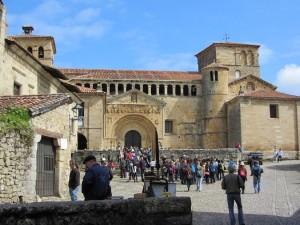
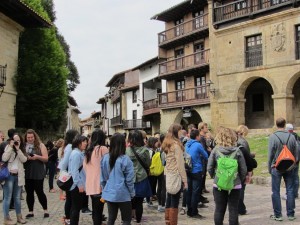
Very close to the town is a cave which is home to one of the most important pictorial ensembles in prehistory, the Caves of Altamira, discovered in the second half of the 19th century and part of the Upper Palaeolithic culture. The beauty and richness of the paintings have led to the find becoming known as the “Sistine Chapel” of Palaeolithic Art.
DESCRIPTION OF THE TRIP
In the morning, we will be visiting Santillana del Mar, taking a walk around the village as far as the Collegiate of Saint Juliana. The teachers will explain the main aspects related to the natural landscape, the culture, history and art, both of Cantabria and Santillana. Students will have free time and, if they wish to, may enter the cloister of the Collegiate on their own.
In the early afternoon, the group will be arriving in Santander and here the students can do one of two things: they can either enjoy themselves on the beach or accompany the teachers taking a stroll as far as the Magdalena Peninsula. The walk starts off in the Plaza de Italia and finishes at the Magdalena Palace. The teachers will explain some of the features of the area. The group will meet up late in the afternoon to take the coach back to Valladolid
Walk around Santillana del Mar
The centre of the village and the palaces: Santillana’s charm lies in the way it has preserved the heart of the village with its cobbled streets. The most representative buildings of civil architecture are the old noble family palaces with their defensive towers, coats of arms, and inscriptions on the façades.
Collegiate of Saint Juliana: a small hermitage was built in the 9th century to preserve and honour the remains of Juliana de Nicomedia, a young girl who was martyred in the 3rd century. In the 12th century, this primitive church was replaced by the current Romanesque buildings, and became an important monastery. Outstanding is the beautiful Romanesque cloister with its twin columns and capitals intricately decorated with mainly medieval religious motifs.
Tour around Santander
EL SARDINERO: the area which is today occupied by the city built around the beaches of El Sardinero sprang up thanks to the development of leisure and health tourism for the aristocracy and upper middle classes in the second half of the 19th century. This was given a major boost in the early 20th century when King Alfonso XIII chose the city as the place to spend his summers. The city was soon transformed and its most representative buildings emerged, such as the Gran Casino, the Royal Hotel, and sumptuous private palaces for the upper classes of Spanish society.
ROYAL PALACE OF LA MAGDALENA: in 1908, the city gave King Alfonso XII the land situated on the Magdalena Peninsula where a few years later the Royal Palace was built. The residence, which combines rich foreign as well as local artistic styles, was regularly used as a summer residence for the royal family until the Republic was proclaimed in 1931. Today, the Peninsula is a public park where there is even a small marine zoo, the Royal Palace being the place where the Menéndez Pelayo International University holds its summer courses.
